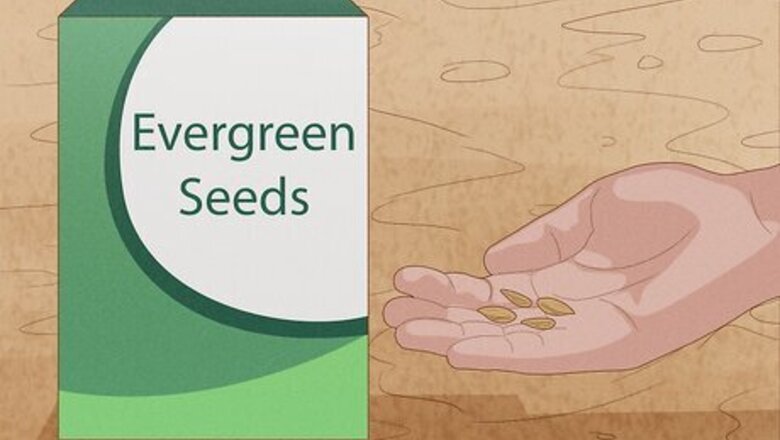
views
X
Research source
Growing Evergreen Seedlings from Seeds

Plant evergreen seeds in the late fall. Some evergreens must go through their natural dormancy period in order to germinate in the spring and summer. Planting the seeds in the late fall will allow them to go through that phase naturally.
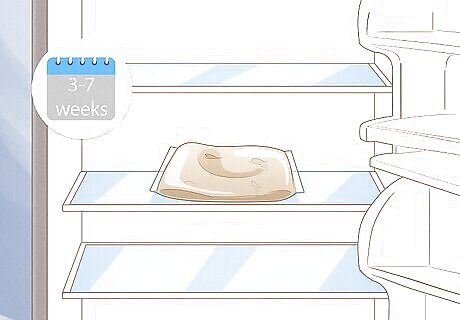
Refrigerate the seeds in sand if you’re not planting them in the fall. Place the seeds in a sealable bag filled with wet sand. Then, place the bag in your refrigerator for 3-7 weeks. This process is known as stratification and will replicate the seed’s dormant period if you can’t plant the seeds outside in the late fall. You can use peat as an alternative to sand.
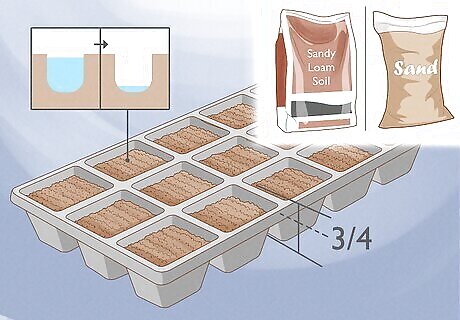
Fill a seedbed with well-drained sand or sandy loam soil. A seedbed is made up of small compartments that will hold each individual seed. You’ll also need a well-drained sand or sandy loam soil to fill up your seed bed. Fill each compartment 3/4ths of the way with the soil or sand. Sand, sandy loam soil, and a seedbed can be purchased online or at a gardening store. Keeping the seedbed inside will protect your seeds from potential disease and predators. You can also use a plastic cup or container to grow your seeds if you can't buy a seedbed.

Bury a seed ⁄8–⁄4 inch (0.32–0.64 cm) deep into each compartment. If you want to improve your chances of germination, you should plant multiple seeds. Some seeds won’t germinate, so account for that possibility as you are planting your seeds. Even if your seed germinates, it may not grow to be a healthy evergreen.
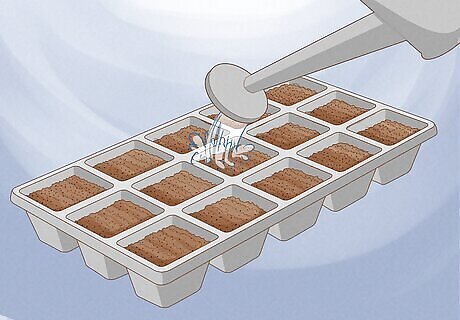
Water the seeds to keep the soil moist. The soil in the seedbed should be kept moist, but not overly saturated. If you’re keeping the seedbed inside or there is a drought in your area, give them a thorough watering once a week. Determine whether the soil is dry by poking your finger an inch down into the soil. If you’re keeping the seedbed outside and it’s raining on a weekly basis, you won’t have to water your seeds.
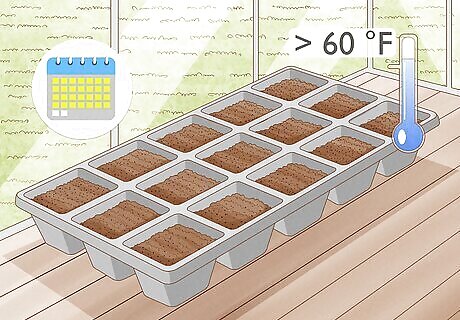
Keep the seeds in an area that gets plenty of sunlight for 2-4 weeks. The seeds of evergreen trees should be kept at least 60 °F (16 °C) for 2-4 weeks in order to properly germinate. A small green stem will form out of the soil for the seeds that properly germinated. If it is under 60 °F (16 °C) outside, bring your seedbed inside so that the seeds can properly germinate. If you’re keeping your seedbed inside, make sure to keep it near the window where it gets plenty of sunlight.

Move the planters to a shady but sunny area after they germinate. Once the seedlings germinate, move them to an area that gets 6-8 hours of light per day, but that is out of direct sunlight to prevent the seedlings from overheating. If the seedlings haven’t germinated after a month, there’s a good chance that they won’t germinate.
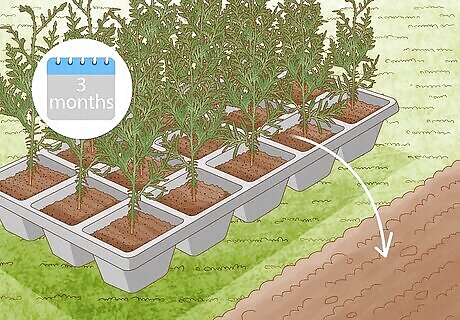
Let the seedling grow for 3 months before transplanting it. The seedling should be healthy enough for transplanting after 3 months if you took care of it properly. You can then transplant the evergreen to a pot or the ground outside. Continue to water the seedling once a week before transplanting it.
Planting Evergreen Seedlings

Plant the seedling in the early fall, spring, or summer. Evergreen trees benefit from warm soil when they are planted. If you plant the seedlings too late in the fall, they may become brown over the winter.
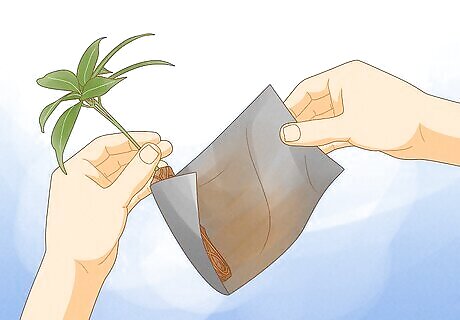
Remove the packaging from the evergreen seedling if you purchased it. You can purchase evergreen seedlings in plastic bags online or from a gardening store. If your seedling came in a bag, open the bag when you get it so that the seedling doesn’t overheat. Try to plant the seedling immediately after you get it. Do not wait more than 3-5 days to plant the seedling.

Cut the tree’s roots to the height of the tree. Use a tape measure to get the height of the tree. The roots of the seedling should be around the same length as the tree. Snip off the ends of the roots with a pair of gardening shears so that the main stem of the tree is the same length as the roots. Cut the roots on a straight line.
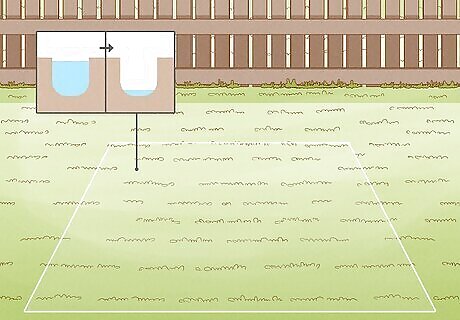
Locate a sunny location with well-drained soil. Most evergreens will thrive in full or partial sunlight. If the soil is too compact, you may want to amend the area with store bought well-drained potting soil before planting the tree. To amend the soil, dump the potting soil over the location and use a shovel or till to mix the soil thoroughly.
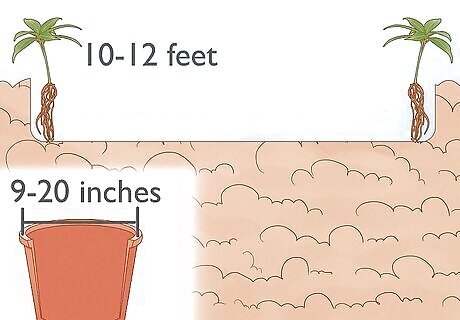
Dig a trench the same depth as the length of the tree’s roots. Find a sunny location to dig your hole. Dig as deep as the length of the roots of the tree. Move the dirt aside for later. If you are planting the tree in a pot, make sure to get a pot that is at least 9–20 inch (23–51 cm) in diameter. If you’re planting more than one tree outside, make sure to space them at least 10–12 feet (3.0–3.7 m) apart from each other. Evergreen seedlings should be planted where they will get plenty of sunlight, though some species like the Japanese yew and hemlock will grow in the shade.
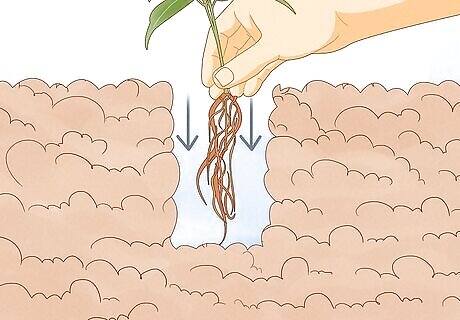
Place the tree in the trench. Carefully lower the tree into the trench, roots first. Lean the tree up against the side of the trench so that it is sticking up vertically. The roots should not curl up or bend in the hole. If you need to, hold the tree in place to prevent this.

Fill the trench with water. Thoroughly soak the roots by filling the trench with water. This will spur initial growth for seedlings. Wait until the water drains down before moving onto the next step.
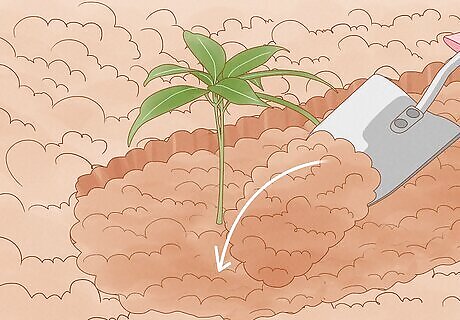
Shovel the soil into the trench. Take the soil that you uncovered when you dug the trench and push the dirt down into the holes surrounding the seedling. Hold the seedling's main stalk vertical as you pack the dirt down around the seedling.
Caring for Evergreen Trees
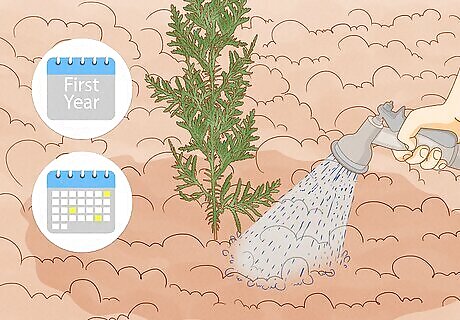
Keep the soil moist around seedlings for the first year. Water the soil every 7-10 days if there is limited rainfall. If you get regular weekly rainfall, however, you don’t have to water your evergreen trees. Giving the young evergreen trees enough water will encourage initial growth.
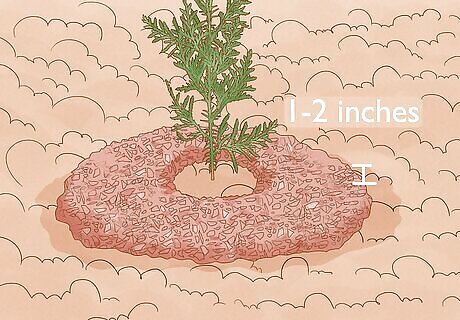
Apply 1–2 inches (2.5–5.1 cm) of mulch around the tree. Regular mulching around your evergreens will improve moisture retention, prevent weed growth, and regulate soil temperature. Purchase an organic or inorganic mulch from a gardening store or online, and sprinkle 1–2 inches (2.5–5.1 cm) of mulch over the soil around the tree. Remove and replace the mulch once every year for the best results. The mulch should be at least 1–2 inches (2.5–5.1 cm) away from the trunk of the tree.
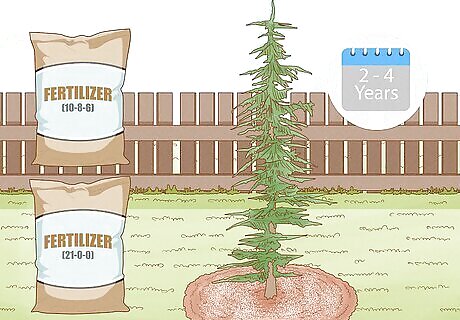
Apply a nitrogen-rich fertilizer to the soil around the tree every 2-4 years. Replacing the fertilizer every 2-4 years will promote the health and growth of your evergreen tree. Evergreen trees need more nitrogen than other types of trees. Purchase a nitrogen-rich fertilizer, such as a 10-8-6 or 21-0-0 fertilizer from a gardening store or online. Sprinkle the fertilizer over the soil around the tree with a drop spreader or your hands. Take a soil sample to see which nutrients you need for your lawn. After you add the fertilizer, make sure to water the tree thoroughly. The first number on the fertilizer stands for nitrogen, the second number stands for phosphorus and the third number stands for potassium.

Prune the tree to control the direction of growth. Evergreens won’t need to be pruned if they have adequate space to grow. However, if you need to prevent the tree from growing in a direction, you can cut up to ⅔ of the last season's growth to control the direction that the tree is growing in. The best time to prune evergreen trees is in the late fall. Prune new growth at a 40-degree angle. You may want to put wood glue over the areas you pruned to prevent the spread of disease. Before and after you prune the tree, disinfect your cutting implements with isopropyl alcohol. Wear gardening gloves when you prune. They'll protect your hands and improve your grip on the cutting implements.
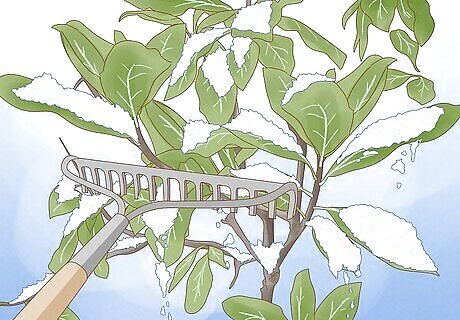
Use a rake to remove ice buildup on the tree during the winter. Snow buildup on evergreen branches can cause them to snap off. If there is anything under the tree, it could damage it. Shaking off the branches with a rake can prevent this from happening.
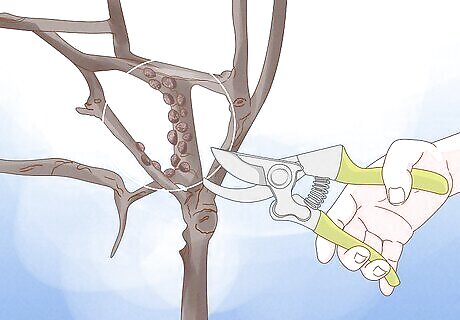
Prune branches to remove disease. Evergreen trees are susceptible to certain tree diseases and fungi that could damage the tree. If you notice discoloration, fungi, or brown spots on branches, prune off the branches as quickly as possible to stop the spread of disease. You may have to replace evergreen trees that have been too badly damaged by diseases or rot.
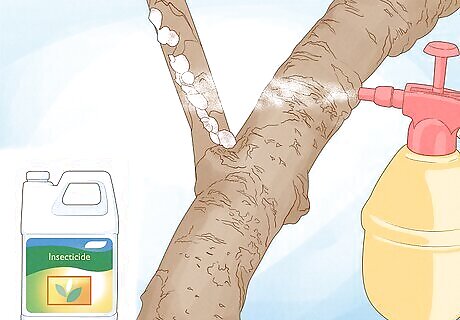
Use insecticides to kill pests. Occasionally evergreens will be infested with aphids and other pests that could damage the tree. To prevent infestations, purchase an insecticide from a gardening store or online and spray the base of the trunk and limbs of the evergreen with the insecticide. If the infestation persists, you may want to catch one of the pests and take it to a cooperative extension so that they can tell you which insecticide works best. Wear gloves and facemask when handling insecticide.
















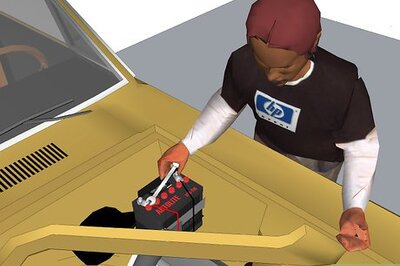

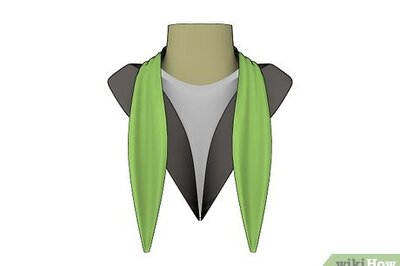

Comments
0 comment